Whisky is bottled with different alcohol contents. The legally prescribed minimum alcohol content is 40 % vol.
We explain in detail how the alcohol content is determined. It's about the alcohol strength in per cent by volume, or 'alcohol by volume' (ABV) for short.
If the strength of a whisky is too high for you, you can also find out how it can be professionally reduced.
Determination in proof
Before there were modern measuring devices, gunpowder was ignited!
Even 200 years ago, whisky production still used the tools that were available at the time. Cask strength Whisky was mixed with gunpowder and ignited. If the mixture burned quickly with a bright flame, the Whisky had a 'proof' alcohol strength. - It was proofed!
However, if the mixture only burned weakly, the alcohol was ' under proof', and if the mixture exploded, the alcohol strength was 'over proof'. Even today, this approach is still reflected in designations such as Springbank 100 Proof or Glenfarclas 105 Proof.
Determination with a spindle
Nowadays, the alcohol strenght is determined using a spindle. This allows it to be determined far more accurately and a measure has been created as opposed to the arbitrary 'proof'.
There are spindles and thermometers in every spirit safe in Scottish distilleries. A spindle is a buoyant body that measures the density of a liquid. As the density depends on the temperature, the density reading must be corrected in a table according to the measured temperature. This allows the alcohol strength to be determined exactly.
Comparison of alcohol vol% and proof
In Scotland, 100 proof corresponds to around 57 % vol. alcohol by volume. Each increase of 5 proof corresponds to an increase in alcohol strength of 3 %. To make matters worse, the Americans define 100 proof differently. There it is only 50 % vol. In the USA, the alcohol strength is obtained by simply dividing the proof number by 2.
Conversion table
Today, whisky is predominantly bottled worldwide in the following strengths. Europeans, but also other countries apart from the USA, largely adhere to the metric system with the volume per cent.
| Strength in vol% | Strength in Proof 1 | Strength in US Proof |
|---|---|---|
| 40 | 71,6 | 80 |
| 43 | 76,6 | 86 |
| 46 | 81,6 | 92 |
| 50,5 | 89,2 | 101 |
| 57 | 100 | 114 |
| 60 | 105 | 120 |
1 These figures are not entirely exact. As correct Central Europeans, we will stick to the metric system with its volume percentages in the following.
Reduction of the drinking strength
If you want to dilute Whisky with water, what ratio should you choose between water and Whisky to achieve a certain alcohol strength? If you dilute at a ratio of 1:1, it's easy. The alcohol strength is reduced by half. Is there a simple formula that can be used to determine the alcohol strength of any mixing ratio? And is there a formula that can be used to determine the amount of water required to reduce a Whisky from a given strength to a lower strength?
Determination of the alcohol strength at home and dilution
You have a Whisky at home whose alcohol strength you have no information about, or a cask strength Whisky and would like to determine the alcohol strength on the one hand and dilute the Whisky itself on the other. There are various methods for this, depending on the area of application.
Determination of the percentage via the absolute alcohol strenght
Task:
A glass is filled with 4cl of 46% whisky. How high is the alcohol content if I add 2cl of water? The mixing ratio whisky : water is 2 : 1.
Result:
The absolute amount of alcohol in the glass is
4cl * 46% = 0.04 litres * 0.46 = 0.0184 litres
After adding 2cl of water, the total amount of liquid has increased to 6cl. The alcohol strength is obtained by dividing the absolute amount of alcohol by the total amount of liquid:
0.0184 litres / 0.06 litres = 0.3067 = 30.67%
In the following table you will find the results of this calculation for the common whisky strengths.
Determining the percentage using the mixing cross
Task:
A glass is filled with 4cl of 57% whisky. How many cl of water must be added to the whisky to achieve an alcohol content of 40%?
Result:
The calculation is made with the help of the mixing cross. The mixing cross is a simple graphical aid for carrying out the calculation.
The mixing cross contains 5 fields, of which a missing field of a diagonal can be calculated using the other two fields. There are the following two equations:
If fields are missing on the right-hand side, the equations can be rearranged according to the missing fields:
You need to add 1.7cl of water to obtain a 40% whisky. The total amount of whisky at 40% is 5.7cl. The mixing cross can be used not only for mixing water and whisky. The result of mixing whiskies of different strengths can also be calculated. This applies not only to the quantities calculated here, but also to multiples and fractions thereof. However, if these conversions are too complicated for you, you can use the freeware programmes at the top of the page.
Conclusion
And this is how you can easily dilute your Whisky:
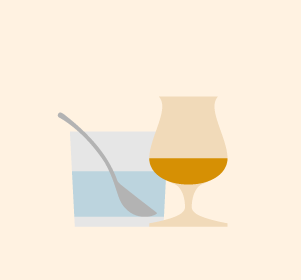
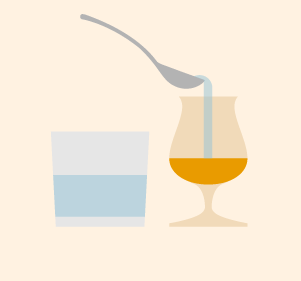
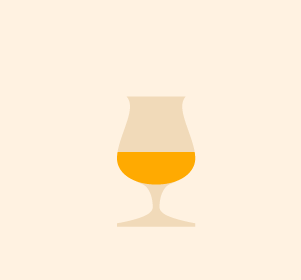

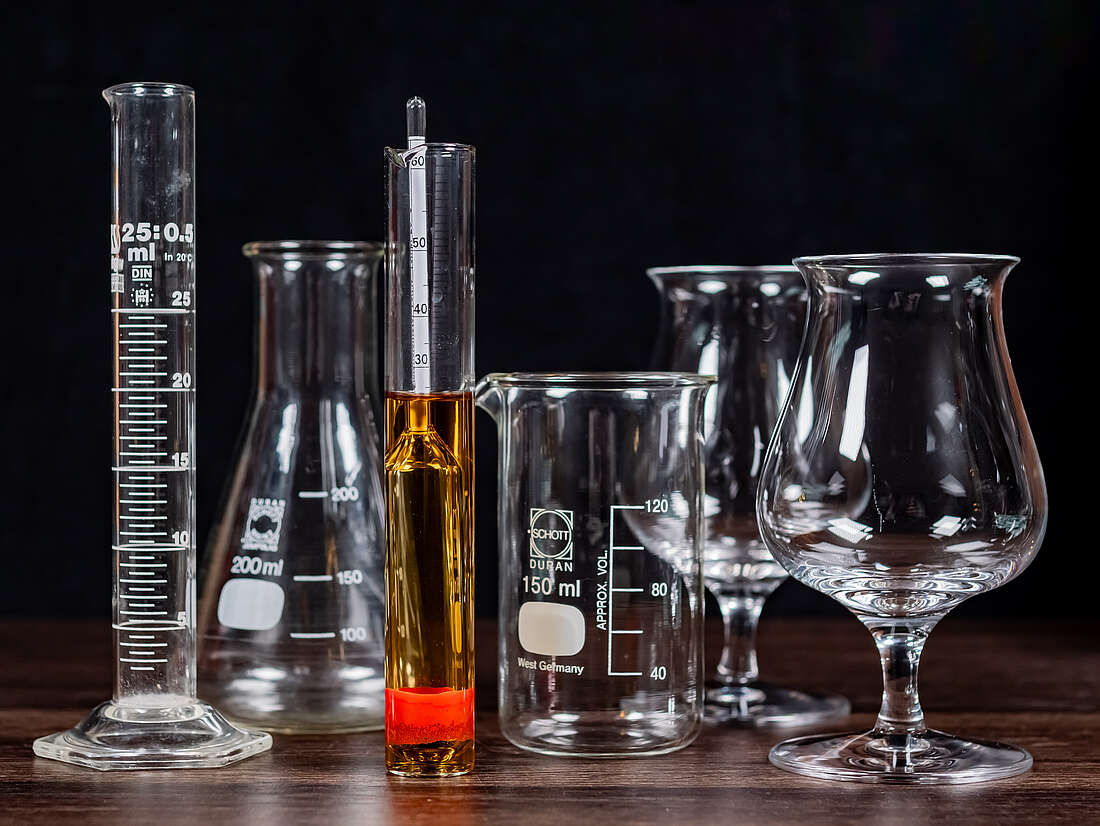
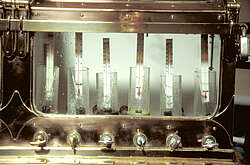

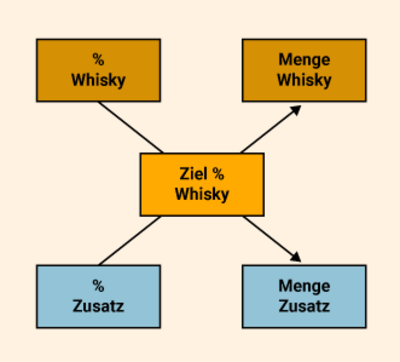
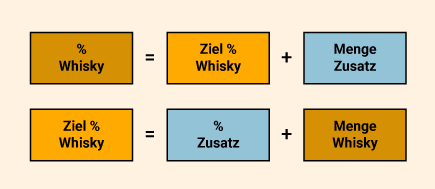
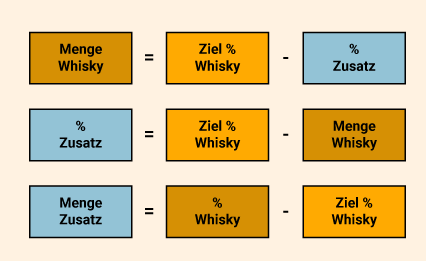
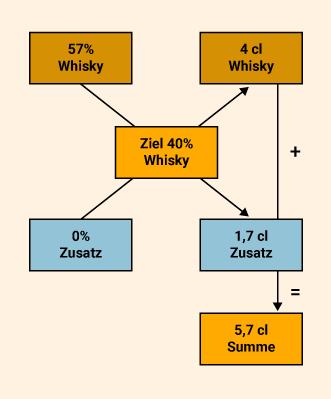


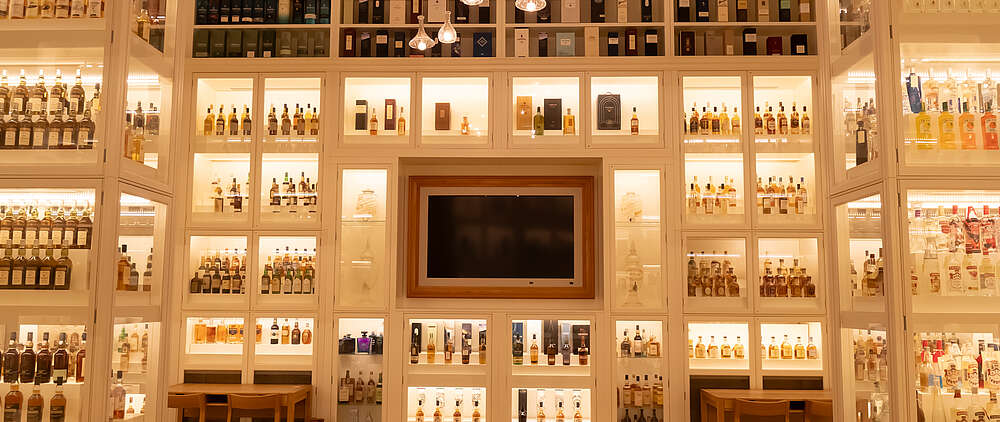
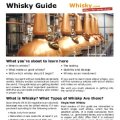
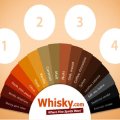
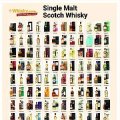
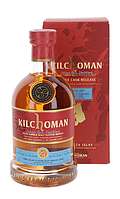
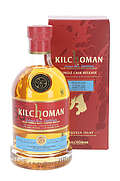
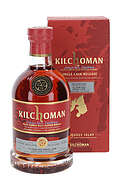
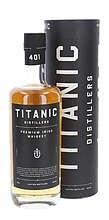
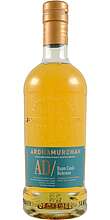



To comment, you must be logged in